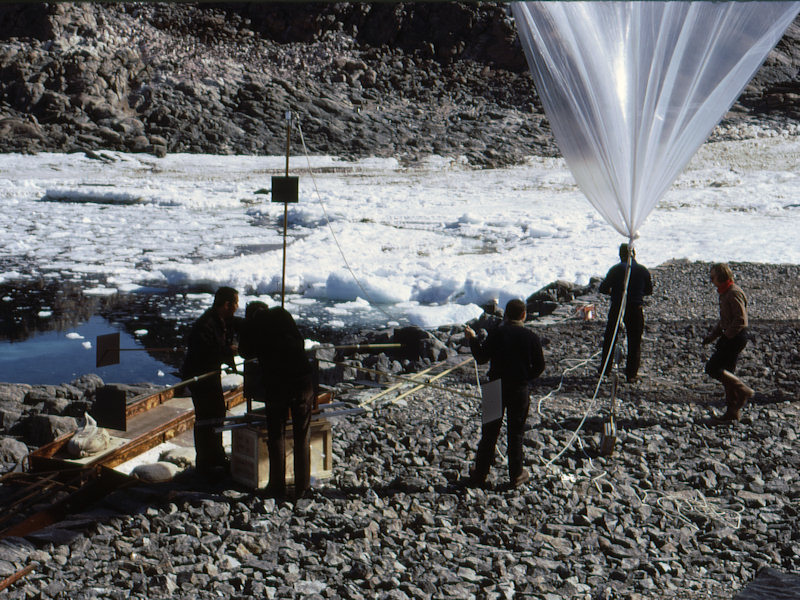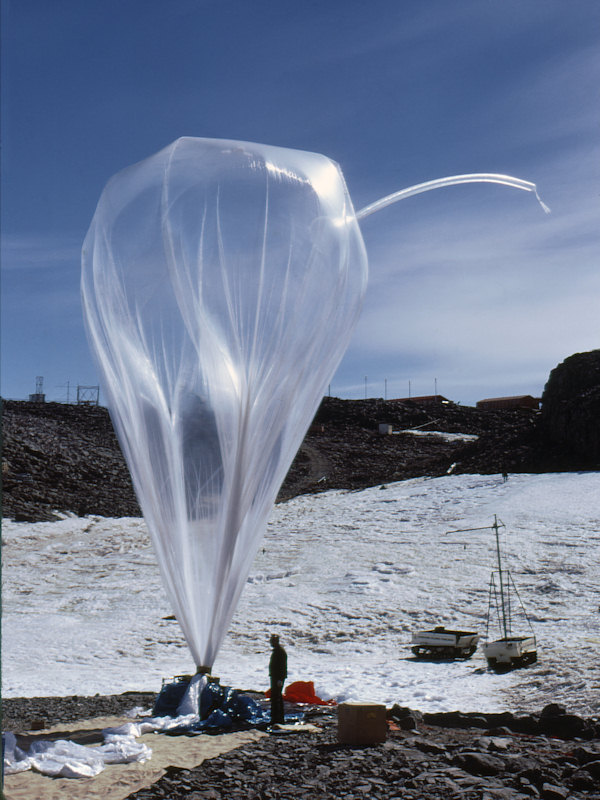
Photo album: "Launch of the balloon"
Fly over a photo with the mouse to enlarge it
Click on a photo to open it in a new window
Continuation of the operations that will end with the launch of the balloon transporting the experiment CITADEL (measurement of the electric field in the ionosphere in Adélie Land). An increase in the wind speed before the launch makes us fear for the worse, i.e. a scratch in the main balloon skin, then a moment of quiet permits the launch without problems.
 |
A view of the two balloons on the launch area. The capacity of the main balloon is 4,500 m3 but it will reach this volume only when it is at the altitude of 30 km. |
 |
Inflation of the main balloon is going on. |
 |
A cable is being attached between the auxiliary balloon and the measurement module, another longer one has already been connected to the main balloon. |
 |
Inflation of the main balloon is now finished and the hose has been tied to prevent the helium to escape. |
.
.
.
.
.
.
.